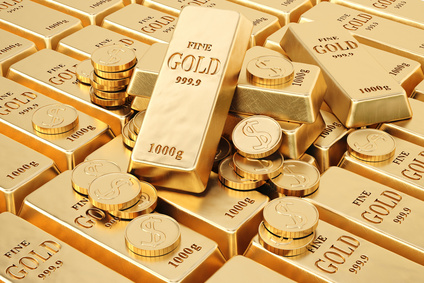In a recent interview, Eric Sprott, Founder, CEO and Senior Portfolio Manager of Sprott Asset Management, discussed a global precious metals shortage, the much-touted global economic recovery, and the future, when gold’s “day will come.”
Sprott mentioned all the “anomalies you see in the gold market,” including the GOFO rate, the Germans not getting their gold from the United States, and central banks finally stating publicly where their gold is located. Sprott, however, focused on an announcement that Kaloti, a company based in Dubai, is planning to build a 1,400-ton gold refinery. Sprott said, “There’s only about 2,800 tons of gold mined a year and about 1,300 tons recycled each year….[so] 1,400 tons…that seems like an awfully big increase in gold refining capacity.”
However, Swiss refineries, Sprott said, are “going full tilt to meet demand out of the East.” Globally, there is about 8,000 tons of gold refining capacity and now Kaloti is adding 1,400 tons of capacity. Why? Sprott said, “We need 9,000 tons because the rate at which we are draining gold out of the Western central banks is beyond most people’s understanding.”
In January, the United States exported 80 tons of gold. The United States mined 20 tons and imported 20 tons, some of which was consumed. But, Sprott said, “At a minimum there’s 40 tons of gold that left the country and there’s no source, other than central banks.” The same story is playing out in Britain, which produces no gold, yet exported 112 tons in February to Switzerland. Sprott said, “You have to conclude that this gold is coming out of central bank coffers.” Given this trend, he said, “There is a bona fide shortage of gold.” He said that bars from the 1960s are starting to appear at Swiss refineries, indicating that central banks are “starting to get to the bottom of the barrel.”
Turning to the much-touted global economic recovery, Sprott said, “I don’t think it’s [global economy] expanding at all….Ninety percent of the people aren’t getting much of a wage increase these days.” Worse, he said, inflation is far higher than the 2% it’s said to be. McDonalds sales were up only 1.2% year over year, which is less than inflation. Sprott said that zero interest rates and printing money is just helping the banking system, not the real economy. He said most countries are in a situation similar to the United States with liabilities of $80 trillion, $3.5 trillion of expenses and $3 trillion income each year, which leaves a yearly shortfall of $500 billion. “How can we possible service that liability? The value of the liability increases each year.” Sprott said such obligations cannot be honored, so outright default or printing more money are the only options. He predicted, “It’s not going to be pretty….The obligations will not be met, one way or the other.”
Silver, Sprott said, provided yet another anomaly in the precious metals markets. He asked, “How come the silver ETFs didn’t lose any silver last year, like the gold ETFs?” The reason, he said, was that “The central banks didn’t need silver.” He said there is strong demand for silver, with US mint sales running 100 to one gold to silver, and the Royal Canadian Mint selling 30 or 40 to 1. He said, “People are buying huge amounts of silver.”
Sprott said, “There are three metals that are likely to explode, more than gold: silver, platinum and palladium.” He said that compared to demand, there are shortages for all precious metals. He argued that there is a lot of anecdotal information that we are massively underestimating the demand for precious metals. He ridiculed recent news that the CME might limit the moves on gold to 1%. He asked, “How ridiculous would that be? They don’t want it to shoot up. Where were those rules last year when they were knocking it down $100?” He predicted that if the new government in India lifts restrictions on gold imports, “There will be an absolute shortage of gold.”
How high can precious metals go? Sprott said, “We know that there is going to be some form of default.” Either governments will say we aren’t going to be able to pay you or they will depreciate their currency. If they do the later, Sprott said, “There is no limit to how high something that is in demand and real relative to these fictitious currencies can go.” He said silver “Could go to $400. It could go to $1,000, if we have hyperinflation.” The key issue, he said, was “Would you rather have the $20 bill or an ounce of silver?” With so many governments printing money, Sprott said, “The day is coming when we are going to see some huge moves in the price of gold….Someday the Chinese will put an order in and there won’t be any gold.”
Sprott said that China, Russia, and India have massively increased their holdings of gold, yet the price has gone down. “Impossible,” he said. “There is way more demand in those markets. At some point there will be a failure to deliver. We are not far from when there’s nothing left to buy.” For those who invest in gold, Sprott said, “Everything is working our way, except the price. Our day will come.”
Disclosure:
The information in the Market Commentaries was obtained from sources believed to be reliable, but we do not guarantee its accuracy. Neither the information nor any opinion expressed herein constitutes a solicitation of the purchase or sale of any futures or options contracts.
Trading derivatives financial instruments and precious metals involves significant risk of loss and is not suitable for everyone. Past performance is not necessarily indicative of future results.




